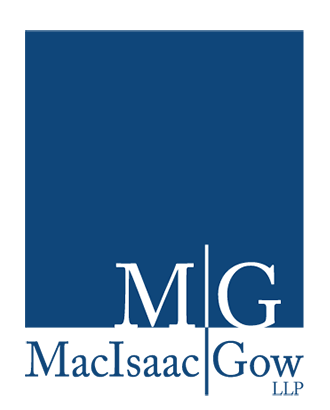In Canadian insurance and , the term “Minor Injury Guideline” carries a lot of weight. It is imperative that claimants and insurers comprehend the minor injury guideline, which is intended to expedite and simplify the claims process for specific injuries.
The Statutory Accident Benefits Schedule contains the Minor Injury Guideline (MIG), which specifies how accident victims’ insurers must cover goods and services if the victim’s injuries meet the guidelines.
Accidents involving motor vehicles are frequently unanticipated occurrences that can have detrimental effects for a long time, particularly for individuals who unluckily suffer personal injuries.
Motor vehicle accident victims who suffer “minor injuries” are given a framework for care and benefits under the Minor Injury Guideline (MIG). Accident victims may end up on the short end of the stick even though the insurance industry may use the MIG to help reduce their payouts and overall costs.
Now let us explore the nuances of the Minor Injury Guideline, explaining its meaning, how it is used, and what the Minor Injury Guideline Free Schedule is all about.
Getting to Know the Fundamentals of the Minor Injury Guideline
The Financial Services Commission of Ontario cfac created the Minor Injury Guideline as a set of guidelines to streamline and manage the handling of claims pertaining to minor injuries sustained in auto accidents. Its main goal is to provide a clear framework for managing cases involving injuries that fall into the “minor” category by classifying and defining them.
In order to comprehend the minor injury guideline, one must first understand what constitutes a “minor injury.” The guideline lists sprains, strains, and whiplash-related disorders as examples of minor injuries. The majority of these injuries must be considered minor, and there shouldn’t be any serious side effects or require a lengthy recovery time.
The MIG has three goals, according to the Financial Services Regulatory Authority of Ontario:
- Quick treatment — If the victim has a wound that MIG defines as a “minor injury,” the new guidelines permit quicker access to rehabilitation services and treatment without the need for prior insurance company approval.
- Enhanced resource utilization — The guidelines are intended to improve the utilization of healthcare resources.
- Cost assurance — Better planning and cost savings are made possible by the increased certainty insurers and medical professionals now have regarding the expenses and payments they will be required to make on behalf of injured victims.
Principal Elements of the MIG
- The Eligibility Factors — In order for a claimant to be eligible for the Minor Injury Guideline, their injuries must meet the guidelines’ definition of “minor.” These usually consist of contusions, whiplash-related illnesses, sprains, and strains. The guidelines guarantee a standardized approach by clearly defining the requirements that injuries must fulfill in order to be classified as minor.
- Treatment Standards — With an emphasis on efficiency and economy, the MIG provides a framework for the management of minor injuries. It frequently entails a set number of treatments for different kinds of injuries, guaranteeing that claimants receive the right care without needless delays or exorbitant costs.
- Care Providers — As per the guidelines for minor injuries, medical practitioners such as chiropractors, physiotherapists, and massage therapists are typically the only ones who can provide treatment. The guidelines specify acceptable fee schedules for these services as well as the kinds of services that can be rendered.
The MIG Free Schedule: An In-Depth Explanation
A fundamental element linked to the MIG is the notion of the “MIG Free Schedule.” For those who fit under the minor injury category, this refers to a predetermined amount of financial coverage that is available for medical and rehabilitation benefits. The MIG Free Schedule directly affects the amount of compensation people can get for their injuries, so it is imperative that people are aware of it.
Getting Around the MIG Free Schedule: Recognizing the Boundaries
Medical and rehabilitation benefit caps are set forth in the MIG Free Schedule, and understanding these caps is essential for anyone handling the claims procedure. It is imperative that those pursuing compensation for minor injuries comprehend these limitations. It should be noted that the MIG Free Schedule is subject to change, so parties involved in personal injury claims should stay up to date on any updates.
Difficulties and Debates Regarding the MIG
The MIG has faced its fair share of difficulties and controversies despite its intention to expedite the minor injury claims process. Opponents contend that the guidelines might not sufficiently take into account the particular circumstances of each case, which could result in some claimants receiving insufficient compensation. As a result, there have been continuous conversations regarding the necessity of potential MIG reforms or adjustments within the legal and insurance communities.
Looking for Legal Advice: The Value of Expert Support
People handling the claims process must obtain legal counsel because of the intricacies and possible difficulties related to the MIG. Expert personal injury lawyers can be of great help in deciphering the MIG’s complexities and guaranteeing that injured parties receive just compensation.
The legal team at MacIsaac Gow LLP boasts over 28 collective years of litigation experience. Our track record includes the successful resolution of multiple multi-million dollar lawsuits, consistently delivering optimal outcomes for our clients. We possess extensive trial experience, appearing before juries and judges across Ontario. Furthermore, we have argued matters at the highest level of court in Ontario and have helped shape personal injury law with court decisions.

